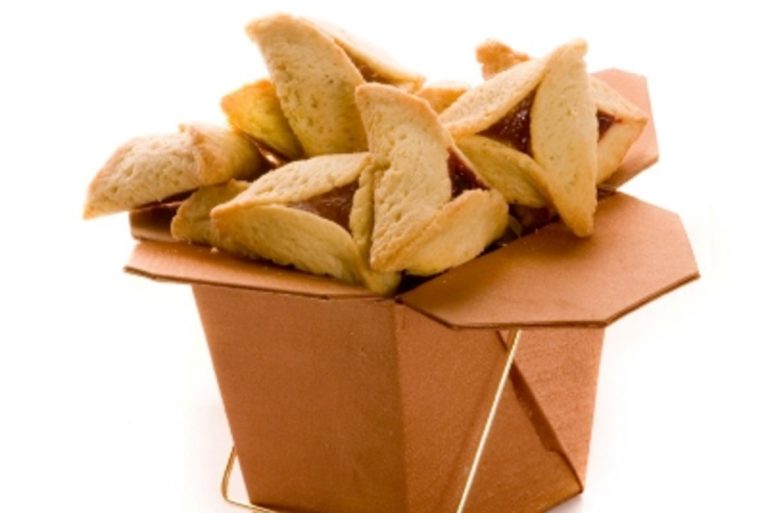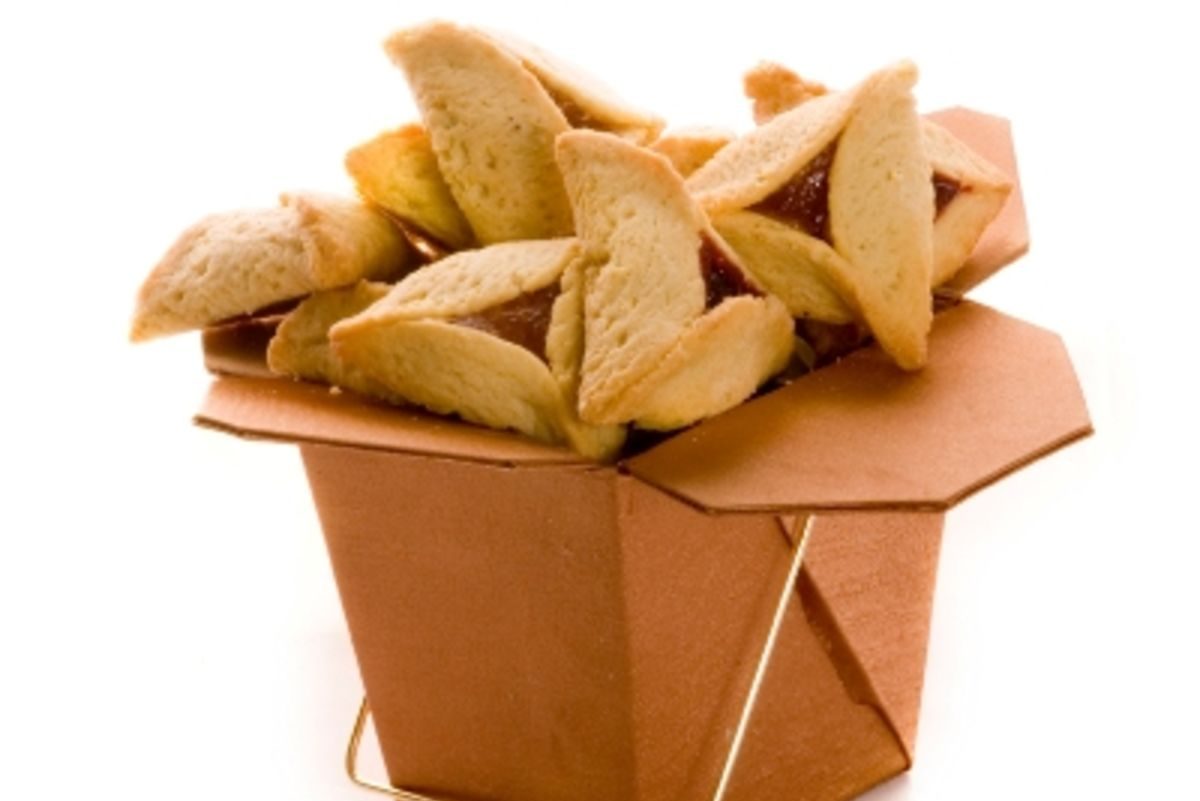 Say the word Purim and most of us think “hamantashen.” Nothing wrong with that, both metaphorically and gastronomically. The idea of eating Haman’s hat is a delicious one: not only for the symbolic destruction of an ancient enemy who sought to destroy the Jews, but the pleasure of the soft, three cornered cookie stuffed with poppy or prune, apricot or raspberry filling. Sure, we can eat them all year, but somehow hamantashen taste better on Purim, which is on Tuesday March 10th.
Say the word Purim and most of us think “hamantashen.” Nothing wrong with that, both metaphorically and gastronomically. The idea of eating Haman’s hat is a delicious one: not only for the symbolic destruction of an ancient enemy who sought to destroy the Jews, but the pleasure of the soft, three cornered cookie stuffed with poppy or prune, apricot or raspberry filling. Sure, we can eat them all year, but somehow hamantashen taste better on Purim, which is on Tuesday March 10th.
Yet, there is another Purim tradition that may get less publicity, but is vitally important, particularly this year, in a faltering economy, when more people are in need, if not of goods, then at least of friendship and comfort. It is the mitzvah of Mishloach Manot, described in Megillat Esther, which speaks of the Jews of Shushan, who celebrated their deliverance from Haman by sending gifts of food to friends. Today Mishloach Manot is seen as a communal bond, a way of showing closeness and uniting us as a people. It brings to mind Queen Esther’s instructions to her cousin Mordechai to “assemble together all the Jews” for fasting and prayer before she went to King Ahasuerus to ask him to protect the Jews and to put a stop to Haman.
Some people say the custom of Mishloach Manot has been commercialized. It certainly can be expensive, if you send store-bought baskets of catered food, wines, chocolates and other confections.
But it need not be. This is the perfect time to cook up some of your own homemade specialties. What better way to show the value of your relationship?
In accordance with our tradition, we are supposed to give two items of ready-made food per person, and it must be substantial. Several of my friends love my banana bread, so that’s what I often send them, along with some homemade chutney or salsa. For another friend I bake biscuits or muffins and prepare fresh fruit salad.
Do you make wonderful challah? Send one, along with some egg salad. Or cook a cheese or mushroom quiche, complete with a side salad of fresh lettuce, cucumber and tomato.
Some people send gifts of vegetable dishes, to remember Esther, who maintained kashruth by eating vegetarian meals in King Achashverosh’s palace: cook asparagus vinaigrette and roasted tomatoes for your friends. If you know people who like to snack, think about gifting homemade trail mix, popcorn, cheese straws or granola bars.
In view of our current economic climate, you might prefer to send something more substantial. My gift this year will be homemade soup and corn bread, but you could choose frittata and tomato salad; a whole grain salad and sliced cold chicken; meatless chili and guacamole.
If you’re good at decorating food gifts, more power to you. But don’t worry if you wish to forego the ribbons, baskets, fancy jars and so on. My friends appreciate the plastic containers I use to send soup, sauce and other liquidy items – I love a product called Snapware, which you can find at some local stores as well as on the internet, but any containers will do. Mishloach Manot is about celebrating Purim joyously and enhancing our bond as friends and community.
Ronnie Fein has been a freelance food and lifestyle writer since 1980. She currently writes regular features for the food and community sections of daily newspapers and has written articles for Newsday, Cook’s Illustrated, Consumer’s Digest, Connecticut magazine, and many other publications. She operates the Ronnie Fein School of Creative Cooking in Stamford, Connecticut and is the author of three cookbooks, the most recent is Hip Kosher (DaCapo, 2008).
